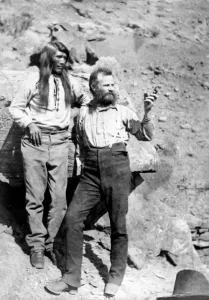
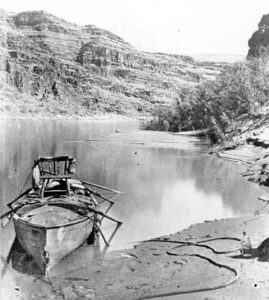 When John Wesley Powell began his expedition through the Grand Canyon he took eleven men with him. The plan was to explore the Grand Canyon by boat. Powell was a one-armed Civil War veteran and self-trained naturalist. The men had been on their expedition for about three months, when three of the men became very concerned about the safety of the mission. Some of the rapids had been heavy, and just ahead, they could hear what the worst of the rapids. The three men, terrified of the rapids that lay ahead, were convinced that they would have a better chance of survival, if they scaled the steep cliffs to the plateau above and walked out.
When John Wesley Powell began his expedition through the Grand Canyon he took eleven men with him. The plan was to explore the Grand Canyon by boat. Powell was a one-armed Civil War veteran and self-trained naturalist. The men had been on their expedition for about three months, when three of the men became very concerned about the safety of the mission. Some of the rapids had been heavy, and just ahead, they could hear what the worst of the rapids. The three men, terrified of the rapids that lay ahead, were convinced that they would have a better chance of survival, if they scaled the steep cliffs to the plateau above and walked out.
It would be hard to fault the men. When the party heard the rapids, they pulled to shore and walked down to see what lay ahead. Indeed, the worst was yet to come. Upon reaching the site of the rapids on foot, they saw, in the words of one man, “the worst rapids yet.” There was no argument from Powell, who wrote that, “The billows are huge, and I fear our boats could not ride them… There is discontent in the camp tonight, and I fear some of the party will take to the mountains but hope not.”
Indeed, the three men decided that they were not going to risk the rapids, so they scaled the cliffs…a move 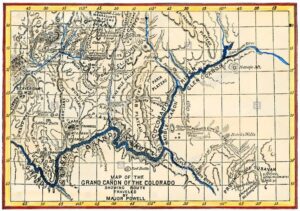 that turned out to be not only a serious mistake but a fatal one. It wasn’t their fault really. They truly thought that Powell’s plan to float the brutal rapids was suicidal. The men were convinced that Powell’s four wooden boats would have been smashed to bits in the punishing rapids…the kind that many would hesitate to run even with modern rafts.
that turned out to be not only a serious mistake but a fatal one. It wasn’t their fault really. They truly thought that Powell’s plan to float the brutal rapids was suicidal. The men were convinced that Powell’s four wooden boats would have been smashed to bits in the punishing rapids…the kind that many would hesitate to run even with modern rafts.
The next day, three of Powell’s men did leave. Convinced that the rapids were impassable, they decided to take their chances crossing the harsh desert lands above the canyon rims. So, on August 28, 1869, Seneca Howland, O G Howland, and William H Dunn said goodbye to Powell and the other men and began the long climb up out of the Grand Canyon. Once the three men left, the rest of the party steeled themselves to the ordeal that lay ahead, climbed into boats, and pushed off into the wild rapids.
While it seemed like a suicide mission, all of men survived the rapids, and the expedition emerged from the canyon the next day. Sadly, when he reached the nearest settlement, Powell learned that the three men who left had not been for fortunate. Allegedly, they encountered a war party of Shivwit Native Americans, and all 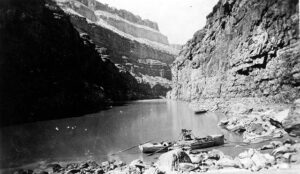
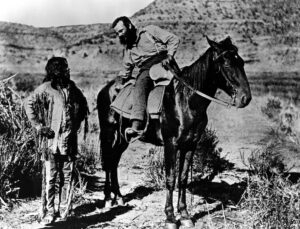 three were killed. Ironically, the three murders were initially viewed as more newsworthy than Powell’s amazing feat and the expedition gained valuable publicity. When Powell planned a second trip through the Grand Canyon in 1871, the publicity from the first trip insured that the second voyage was far better financed than the first. Sadly, the increased financing for the expedition came at great cost…to the three men who were murdered anyway.
three were killed. Ironically, the three murders were initially viewed as more newsworthy than Powell’s amazing feat and the expedition gained valuable publicity. When Powell planned a second trip through the Grand Canyon in 1871, the publicity from the first trip insured that the second voyage was far better financed than the first. Sadly, the increased financing for the expedition came at great cost…to the three men who were murdered anyway.


Leave a Reply